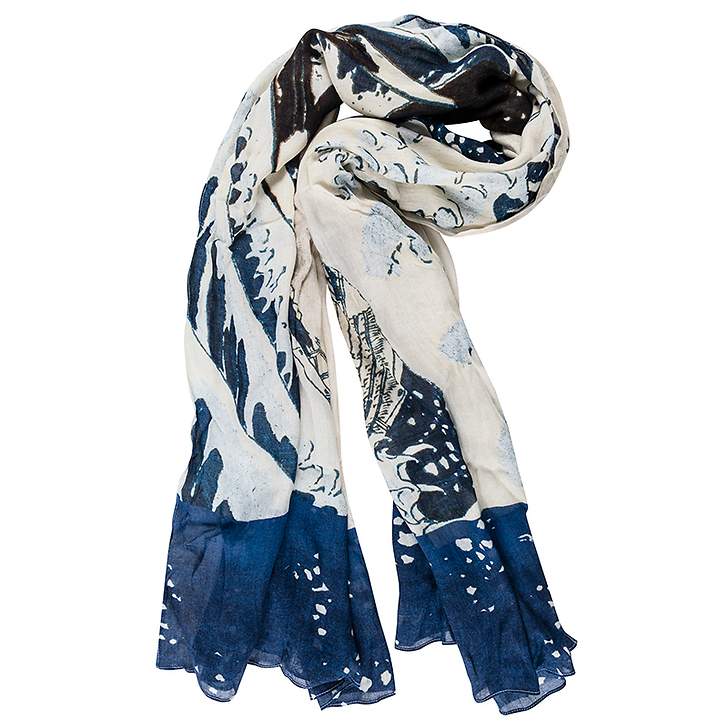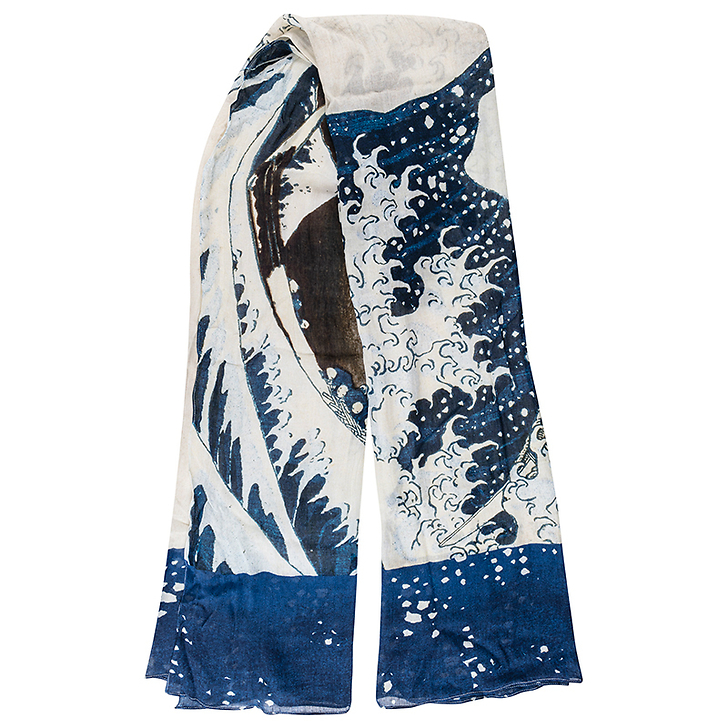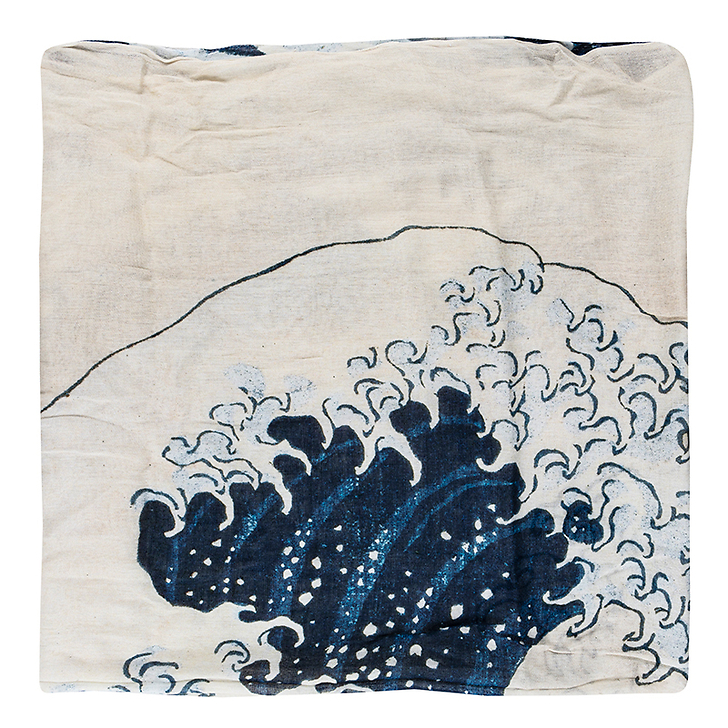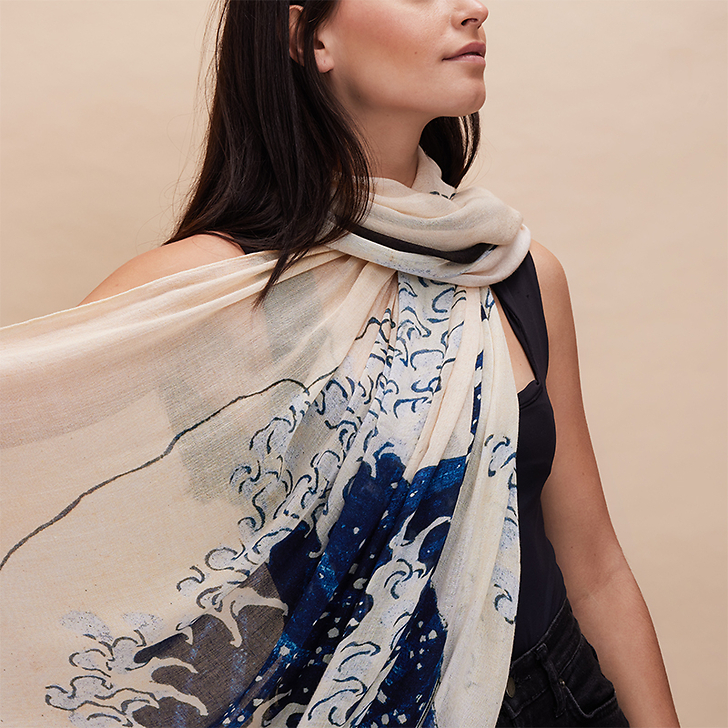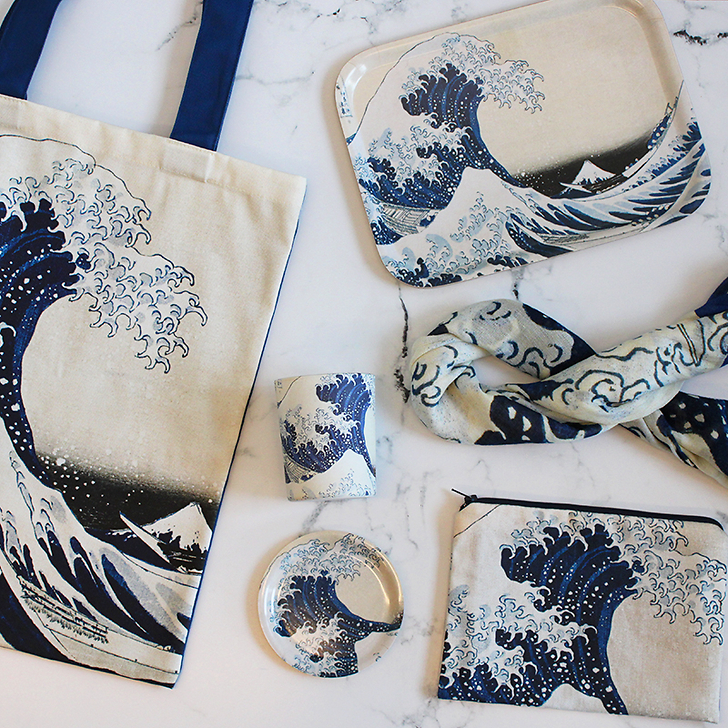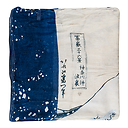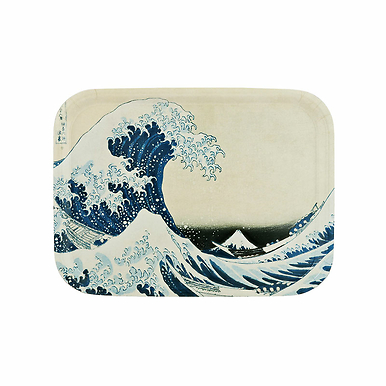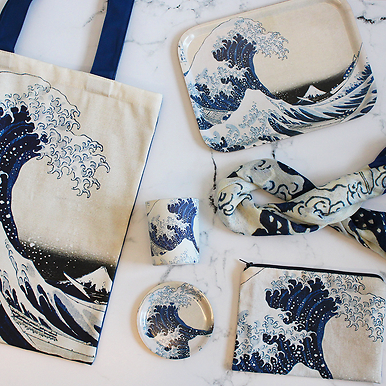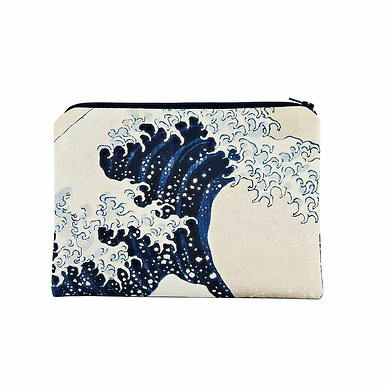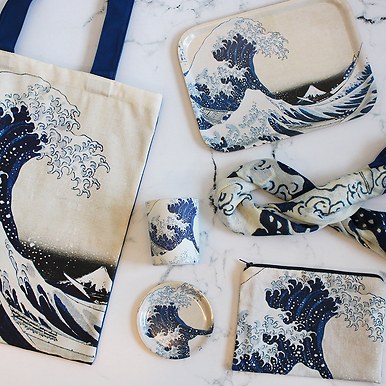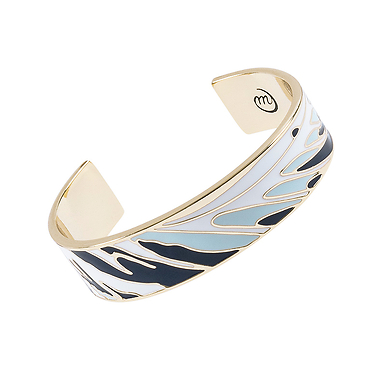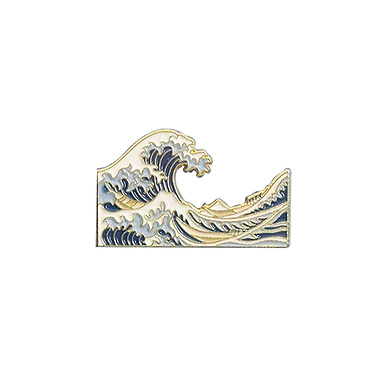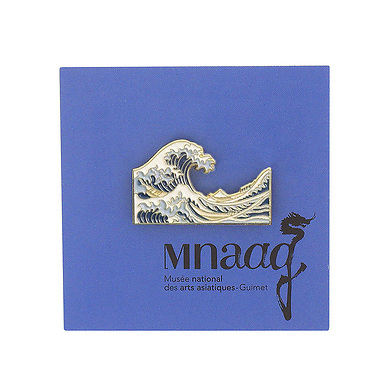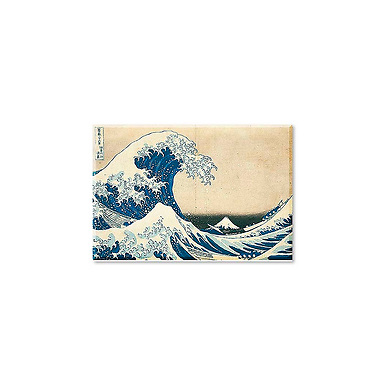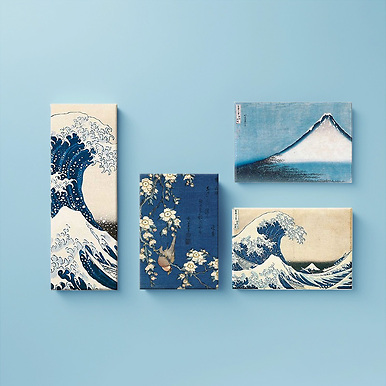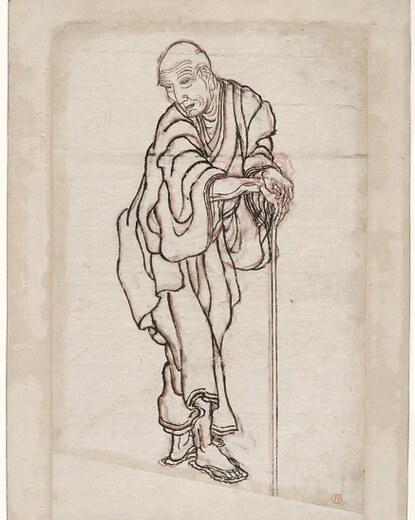This large-format stole is inspired by a detail from one of the most famous works by Japanese artist Katsushika Hokusai (1760-1849), "Under the wave off Kanagawa" ("the great wave") (Kanagawa oki namiura) 1830-32.
Katsushika Hokusai (1760-1849) is the world's most famous painter, draughtsman, engraver and author, who renewed the art of printmaking with famous works such as "Under the Wave off Kanagawa", the first in the series of Thirty-six Views of Mount Fuji published between 1829 and 1830.
To find out more about the work
What is the name of the series in which The Great Wave appears?
The Great Wave of Kanagawa is the first print in the series entitled "Thirty-six views of Mount Fuji". Although its name indicates thirty-six views, this masterful series actually comprises forty-six prints, all devoted to different representations of the famous Mount Fuji.
What is the message of The Great Wave of Kanagawa?
The Great Wave of Kanagawa illustrates the complex relationship between man and nature, symbolized by the confrontation between the powerful wave and the fragile fishing boats. This work also expresses the Japanese philosophy of ukiyo-e, representing the ephemeral nature of existence through a frozen moment in which nature deploys its full force. Finally, it testifies to Hokusai's technical mastery, creating a balanced composition between the unchanging Mount Fuji and the threatening wave, evoking the perpetual struggle between permanence and change.
What is the name of The Great Wave of 1830?
The Great Wave of 1830 goes by the Japanese name "神奈川沖浪裏" (Kanagawa-oki nami-ura), which literally means "Under the wave off Kanagawa". This work is also known as "The Great Wave of Kanagawa" or simply "The Wave". Its full title in French is "Sous la vague au large de Kanagawa", part of the famous "Thirty-six views of Mount Fuji" series.
What's the story behind Hokusai's The Great Wave?
Published between 1829 and 1833 during the Edo period, The Great Wave of Kanagawa is the first print in Hokusai's "Thirty-six views of Mount Fuji" series, using the new Prussian blue pigment imported from Europe.
